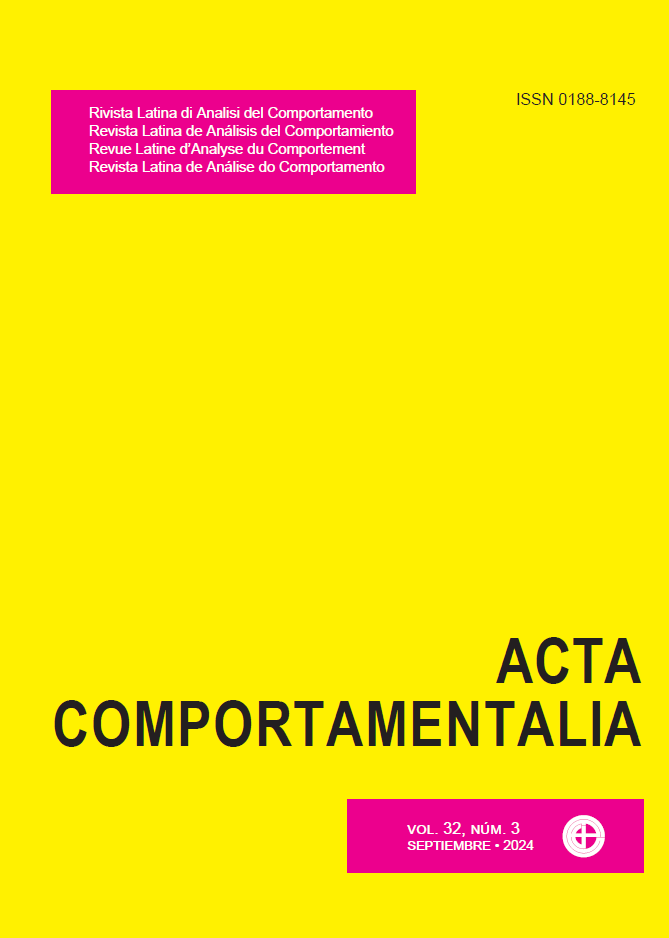Others' Individual Preferences on Interaction Mode in a Risk Contingency
DOI:
https://doi.org/10.32870/ac.v32i3.88371Keywords:
individual differences, interactive styles and their modulation, open contingency, closed contingency, risky situationAbstract
Individuals exhibit unique and consistent response tendencies over time when they face situations without explicit performance criteria. It has been postulated that these patterns are altered when execution criteria are incorporated into the situation or when other individuals participate or interact. This study evaluated whether exposure to other individuals' preferences affected how participants faced a risk situation individually. Eight participants work in a horse betting task; they were presented with two alternatives to respond to, one risky and one conservative (regarding the probability and magnitude of payoffs given in each alternative). In the first two phases, participants faced the betting task individually and without explicit performance criteria. In phases 3 and 4, participants faced the same task, but now, they had the possibility of consulting the preferences of their groupmates who responded to the conservative component (Group 1) or to the risky component (Group 2). During phases 1 and 3, participants were exposed to ascending probability gradients and, during phases 2 and 4, to descending ones. Individual differences were observed in the condition where criteria were not made explicit; when individuals observed the preferences of others, most participants adjusted their responses to them. The results are discussed and it is concluded concerning the modulation of the mode of interaction in the risk contingency and the implications of establishing criteria in the situation.
Downloads
Downloads
Published
How to Cite
Issue
Section
License

<a rel="license" href="http://creativecommons.org/licenses/by-nc-sa/4.0/"><img alt="Licencia de Creative Commons" style="border-width:0" src="https://i.creativecommons.org/l/by-nc-sa/4.0/88x31.png" /></a><br />Este obra está bajo una <a rel="license" href="http://creativecommons.org/licenses/by-nc-sa/4.0/">licencia de Creative Commons Reconocimiento-NoComercial-CompartirIgual 4.0 Internacional</a>.






